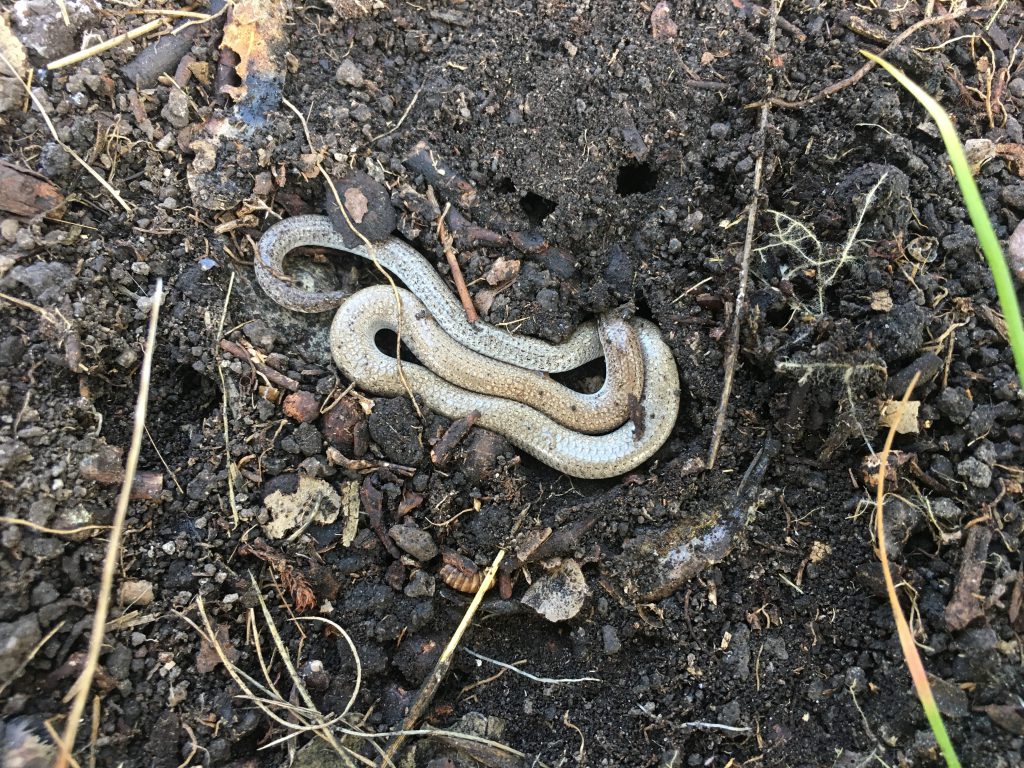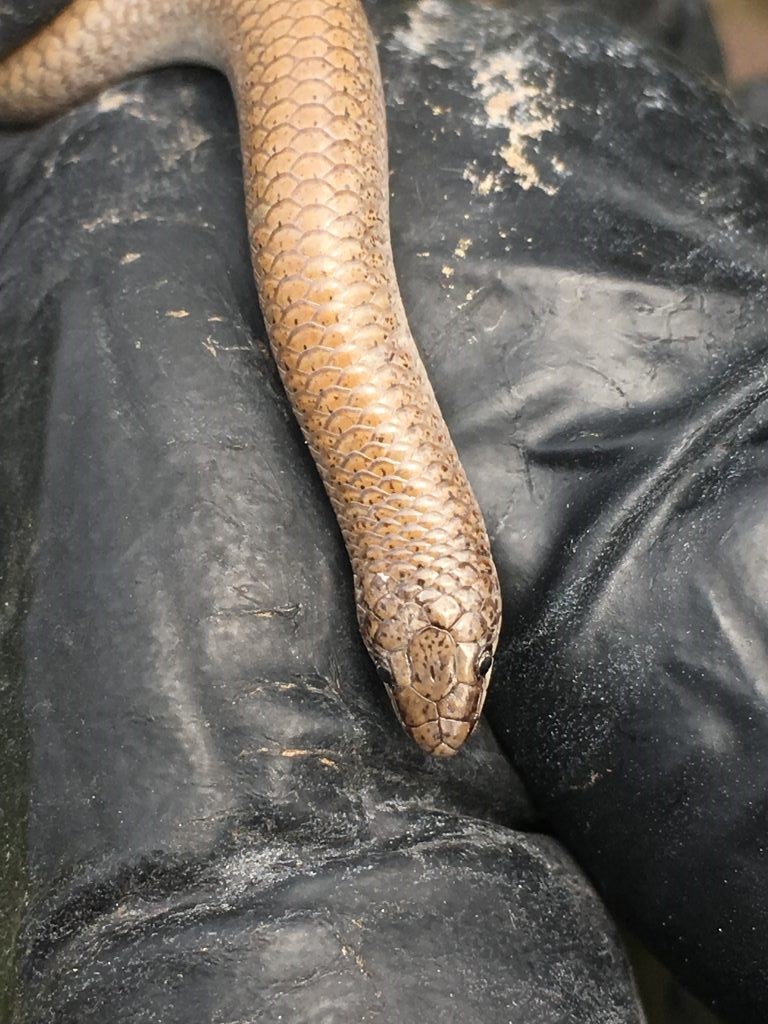An update on the ongoing monitoring of the Eared Worm-Lizard (Aprasia aurita)
The Eared Worm-Lizard (Aprasia aurita) is an endangered legless lizard species endemic to south-eastern Australia. The species was only relatively recently identified in the South East, with annual surveys conducted since 2012. The surveys occur along the Reedy Creek Range between the months of September and December, using grids of roofing tiles that act as microhabitat for A. aurita and other reptile and insect species. Catch up on the background to our work on this species here.
Each Aprasia lizard has a unique head scale pattern, which is used to identify individuals and determine the population at each of the survey sites. I have been coordinating the current spring-summer round of annual monitoring program (underway since September 2018), and was very excited to rediscover Thomas, an individual who was first captured and recorded in October 2012! The lifespan of these small creatures is currently unknown, so the ability to use photographs to track recaptured lizards over time may bring us closer to finding some answers.
Since 2012, surveys have been undertaken in spring and early summer, but never in the first months of the new year, so there was uncertainty as to whether Aprasias would still be present in January. As such, I was delighted to find two individuals in my most recent survey which means that it is worth extending the survey period in the future. As an added bonus, photos of the second lizard’s head scale pattern revealed that this individual was also an unnamed recapture, originally caught in 2016.
To date I have captured 15 individuals, and hope to identify more as surveys continue. Unfortunately, I have also encountered 22 snakes who have been equally as horrified to be encountering me. A good cardio workout nonetheless as an encounter as such close range certainly gets the heart racing! Aside from numerous centipedes and scorpions, I have also found a range of other scaly species such as:
- Lowlands Earless Skink (Hemiergis peronii)
- Bougainville’s Skink (Lerista bougainvillii)
- Eastern Three-lined Skink (Acritoscinus duppereyi)
- Garden Skink (Lampropholus guichenoti)
- Southern Grass Skink (Pseudemoia entrecasteauxii)
- Eastern Striped Skink (Ctenotus spaldingi)
Each captured Aprasia undergoes a photoshoot (to add to the library of ID photos) before being released under the same tile under which it was found. I’ll continue carrying out surveys during the rest of summer, as the weather allows.



